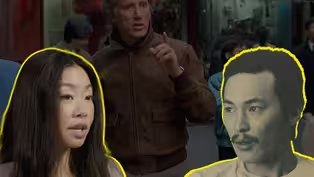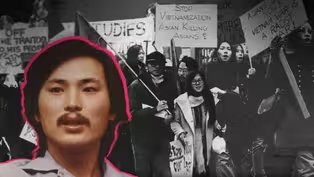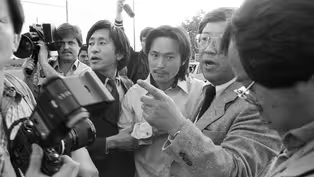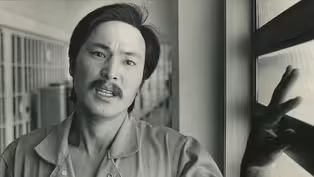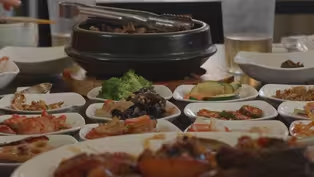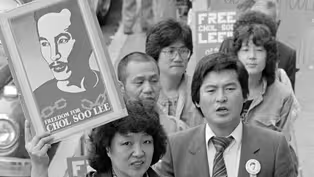
A Short History of Korean American Immigration
Clip: Season 24 Episode 12 | 4m 53sVideo has Closed Captions
What was that Korean-American journey like?
Korean culture has long been a part of the fabric of American culture. But what was that journey like? The three most significant waves all happened in relation to geopolitical tensions and trends in both America and Korea. Dolly Li dives deeper. Stream Free Chol Soo Lee now on YouTube or the PBS App.
Problems playing video? | Closed Captioning Feedback
Problems playing video? | Closed Captioning Feedback

A Short History of Korean American Immigration
Clip: Season 24 Episode 12 | 4m 53sVideo has Closed Captions
Korean culture has long been a part of the fabric of American culture. But what was that journey like? The three most significant waves all happened in relation to geopolitical tensions and trends in both America and Korea. Dolly Li dives deeper. Stream Free Chol Soo Lee now on YouTube or the PBS App.
Problems playing video? | Closed Captioning Feedback
How to Watch Independent Lens
Independent Lens is available to stream on pbs.org and the free PBS App, available on iPhone, Apple TV, Android TV, Android smartphones, Amazon Fire TV, Amazon Fire Tablet, Roku, Samsung Smart TV, and Vizio.
Buy Now

The Misunderstood Pain Behind Addiction
An interview with filmmaker Joanna Rudnick about making the animated short PBS documentary 'Brother' about her brother and his journey with addiction.Providing Support for PBS.org
Learn Moreabout PBS online sponsorship- From Hollywood, to sports, to civil rights, Korean Americans have had a huge impact in the US.
It's as if Korean culture has always been a part of America, but, in reality, the Korean community has endured war, exclusion, and famine to make it in this country, so let's look at the three most significant waves of Korean immigration to the US.
(upbeat music) (typewriter clicks) (idyllic music) Hawaii, land of beaches, luaus, tropical food, and some of the very first Korean immigrants to the United States, but why Hawaii?
(record scratches) Well, there were both push and pull factors.
First, the push factor from Korea.
At the turn of the 20th century, famine and political turmoil forced people to leave their country for survival.
Second, there was the pull factor from the US, the passing of the Chinese Exclusion Act in 1882.
This was the first law that legally excluded a group of immigrants from the US solely based on nationality.
The ripple effect of the Exclusion Act?
A labor shortage, and these new Korean immigrants were tasked to fill that void.
Some of the first Korean immigrants arrived as plantation workers.
By then, the US had annexed Hawaii and was extracting its tropical resources.
By 1905, more than 7,000 Koreans were in Hawaii to work on pineapple and sugar cane plantations.
These Korean laborers experienced similar anti-Asian sentiments that led to the Chinese Exclusion Act, despite being of a completely different nationality.
That is called racism.
Not long after, the Immigration Act of 1924 set quotas on immigration from different regions.
It favored a handful of countries from Western Europe and pretty much excluded all of Asia and Africa.
During this time, Korean and Asian immigration took a nosedive, but then war changed everything.
(foreboding music) In 1950, the Korean War started.
This was also called the Forgotten War in the US, forgotten in part because it was overshadowed by big wars, like World War II and the Vietnam War, but it certainly wasn't forgotten by Koreans.
The second wave of Korean immigration is directly tied to this war.
Like any war, the history is complicated, but it was basically fought between the US-backed forces in the South and the communist China-backed forces in the North.
The war resulted in the peninsula being divided into today's North and South Koreas.
It also introduced the immigration of Korean war brides to America.
They're women who marry American soldiers during a time of active service.
The War Brides Act, which first came about during World War II, allowed these servicemen to bring their foreign wives, children, and adopted children to America.
This meant that they were able to bypass that 1924 quota system I mentioned earlier, the one that limited immigration from Asia and Africa.
The story of Chol Soo Lee, a Korean American civil rights icon, also intersects with this history.
- [Chol Soo] I was born out of wedlock during the Korean War, and sadly for my mother, she was disinherited from her family, so she married an American soldier and left for America.
- Over a few decades, nearly 100,000 Korean war brides came to the US, as well as over 300,000 Korean adoptees, but even with the War Brides Act, the number of Korean immigrants didn't change significantly until the immigration quota was finally lifted.
(pensive music) (upbeat music) The Immigration and Nationality Act of 1965 replaced the quotas by country of origin.
It expanded immigration preference to people who had families in the US or were considered highly skilled and educated workers.
- [Lyndon B. Johnson] This bill says simply, that from this day forth, those wishing to immigrate to America shall be admitted on the basis of their skills and their close relationships to those already here.
- The law transformed the makeup of America, including Korean America.
From 1960 to 1980, the number of Korean immigrants grew from 11,000 to 290,000.
An increase of more than 2,000%, but today, even though the racist immigration laws that shaped Korean immigration are gone, racism is not.
Asian Americans, including Korean Americans, are facing a new wave of terror, a rise in Asian-targeted violent hate crimes.
A 2022 report found that anti-Asian hate crimes increased by more than 300% in a single year during the pandemic.
This fear-based violence is unfortunately reminiscent of an era leading up to the exclusionary immigration laws, but today, the Korean and Asian American community are coming together and demanding justice.
If you want to learn more about Asian American history, I highly recommend you watch this documentary, "Free Chol Soo Lee".
There's more info in the links below.
♪ ♪
The Misrepresentation of Chol Soo Lee
Video has Closed Captions
Clip: S24 Ep12 | 5m 34s | Was this flick a prime example of Hollywood’s White Savior Complex? (5m 34s)
Video has Closed Captions
Clip: S24 Ep12 | 4m 49s | Did a song help free an incarcerated man? (4m 49s)
Video has Closed Captions
Preview: S24 Ep12 | 1m | The unbelievable life story of Chol Soo Lee, a Korean immigrant wrongfully convicted of mu (1m)
Video has Closed Captions
Preview: S24 Ep12 | 30s | Rollercoaster story of Chol Soo Lee, a Korean immigrant wrongfully convicted of murder. (30s)
Dinner And a Doc | Free Chol Soo Lee
Video has Closed Captions
Clip: S24 Ep12 | 1m 50s | Free Chol Soo Lee co-directors share lunch with activists in L.A.'s Koreatown. (1m 50s)
Inside Look | Free Chol Soo Lee
Video has Closed Captions
Clip: S24 Ep12 | 1m 30s | Get an inside look at Free Chol Soo Lee from Independent Lens. (1m 30s)
Providing Support for PBS.org
Learn Moreabout PBS online sponsorshipSupport for PBS provided by:
